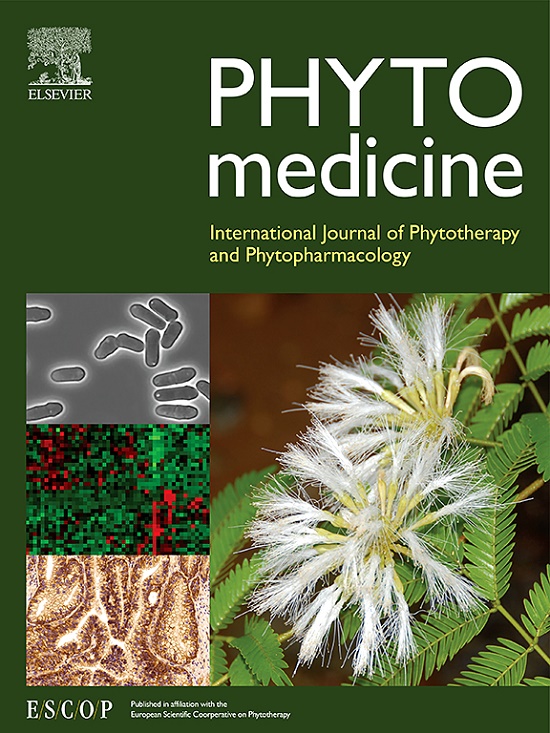Aristolochic acid IVa ameliorates arthritis in SKG Mice by regulating macrophage polarization and Th17/Treg balance
IF 6.7
1区 医学
Q1 CHEMISTRY, MEDICINAL
引用次数: 0
Abstract
Background
Aristolochic acids (AAs)-containing herbs have been used as medicinal remedies for thousands of years. However, exposure to AAI and AAII increases the risk of nephropathy and cancers. Our previous study identified AAIVa, an analogue without carcinogenicity or nephrotoxicity, exerted anti-inflammatory effects.
Purpose
To explore AAIVa's anti-inflammatory mechanisms and assess its therapeutic potential in arthritis.
Methods and results
In this study, we employed in vitro assays on RAW 264.7 cells and explored the underlying mechanisms of AAIVa's anti-inflammatory effect through transcriptome analysis, identifying macrophage polarization-associated genes, IL-17 signaling, and Rheumatoid Arthritis (RA) pathway. Also, we used BALB/cAnSmoc-Zap70em(W163C)Smoc (SKG) mice, a model that spontaneously develops chronic arthritis closely resembling human RA, and revealed AAIVa's therapeutic potential in arthritis. AAIVa-treatment (10 mg/kg, i.g.) for 4 weeks protected SKG mice from mannan-accelerated arthritis symptoms, reducing inflammation and improving bone microstructure. We further isolated bone marrow-derived macrophages (BMDMs) and spleen primary cells from SKG and BALB/c mice to evaluate the impact of AAIVa on macrophage polarization and T cell differentiation. We found that AAIVa induced M2 macrophage polarization in BMDMs, and mitigated lipopolysaccharide-stimulated inflammation by increasing Tregs and decreasing Th17 cells. Subsequently, the elevation of M2 macrophages, increased Tregs expression and decreased Th17 cells in the ankle joints of SKG mice supported our in vitro observation.
Conclusion
We provide first evidence that AAIVa exerts anti-arthritis effects, likely through modulation of macrophage polarization and restoration of the Th17/Treg balance. Our findings highlight AAIVa's mechanism of action and AAIVa's potential as a therapeutic candidate for autoimmune arthritis.

求助全文
约1分钟内获得全文
求助全文
来源期刊

Phytomedicine
医学-药学
CiteScore
10.30
自引率
5.10%
发文量
670
审稿时长
91 days
期刊介绍:
Phytomedicine is a therapy-oriented journal that publishes innovative studies on the efficacy, safety, quality, and mechanisms of action of specified plant extracts, phytopharmaceuticals, and their isolated constituents. This includes clinical, pharmacological, pharmacokinetic, and toxicological studies of herbal medicinal products, preparations, and purified compounds with defined and consistent quality, ensuring reproducible pharmacological activity. Founded in 1994, Phytomedicine aims to focus and stimulate research in this field and establish internationally accepted scientific standards for pharmacological studies, proof of clinical efficacy, and safety of phytomedicines.
 求助内容:
求助内容: 应助结果提醒方式:
应助结果提醒方式:


